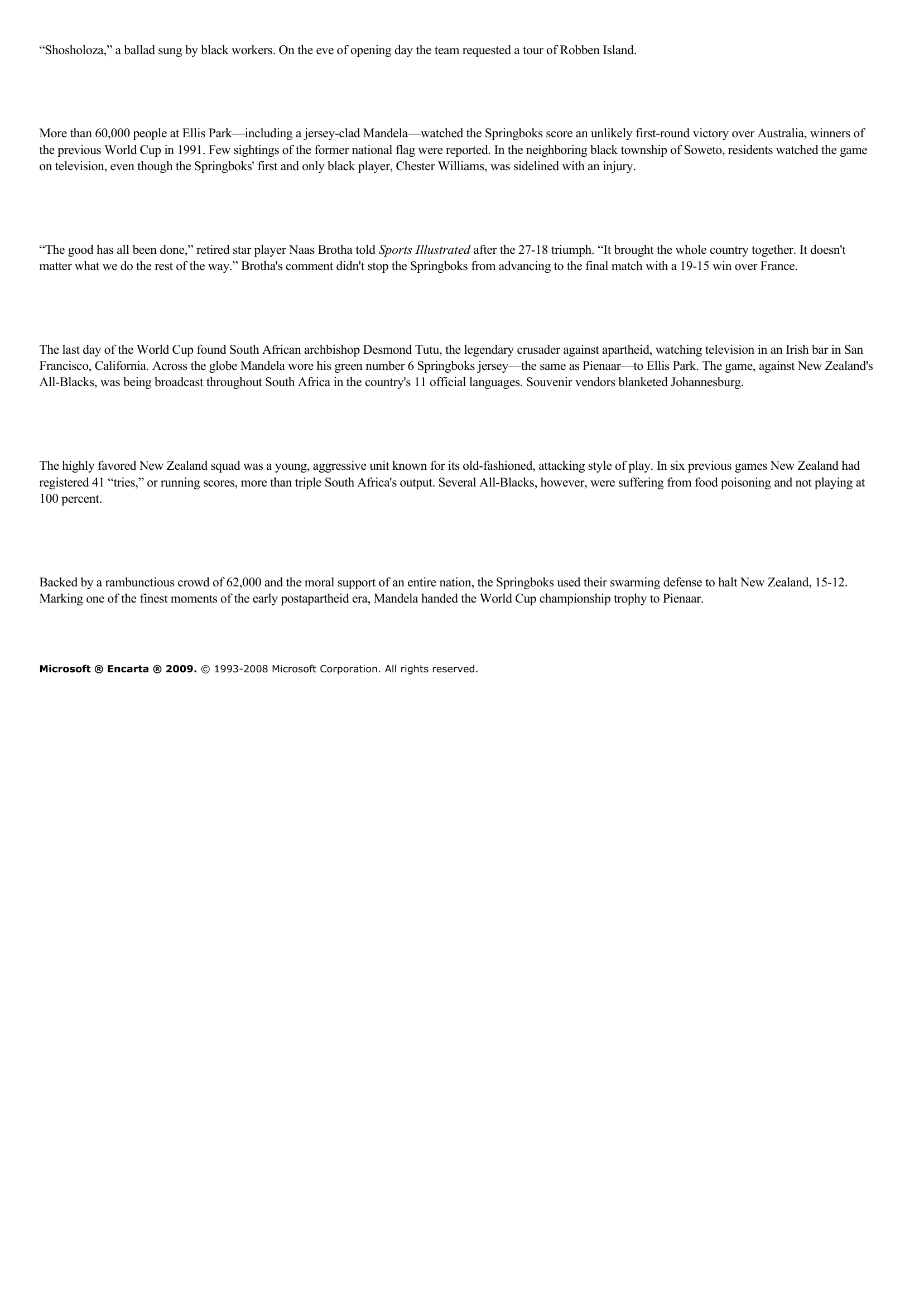South Africa Wins Rugby World Cup.
Publié le 14/05/2013

Extrait du document
«
“Shosholoza,” a ballad sung by black workers.
On the eve of opening day the team requested a tour of Robben Island.
More than 60,000 people at Ellis Park—including a jersey-clad Mandela—watched the Springboks score an unlikely first-round victory over Australia, winners ofthe previous World Cup in 1991.
Few sightings of the former national flag were reported.
In the neighboring black township of Soweto, residents watched the gameon television, even though the Springboks' first and only black player, Chester Williams, was sidelined with an injury.
“The good has all been done,” retired star player Naas Brotha told Sports Illustrated after the 27-18 triumph.
“It brought the whole country together.
It doesn't matter what we do the rest of the way.” Brotha's comment didn't stop the Springboks from advancing to the final match with a 19-15 win over France.
The last day of the World Cup found South African archbishop Desmond Tutu, the legendary crusader against apartheid, watching television in an Irish bar in SanFrancisco, California.
Across the globe Mandela wore his green number 6 Springboks jersey—the same as Pienaar—to Ellis Park.
The game, against New Zealand'sAll-Blacks, was being broadcast throughout South Africa in the country's 11 official languages.
Souvenir vendors blanketed Johannesburg.
The highly favored New Zealand squad was a young, aggressive unit known for its old-fashioned, attacking style of play.
In six previous games New Zealand hadregistered 41 “tries,” or running scores, more than triple South Africa's output.
Several All-Blacks, however, were suffering from food poisoning and not playing at100 percent.
Backed by a rambunctious crowd of 62,000 and the moral support of an entire nation, the Springboks used their swarming defense to halt New Zealand, 15-12.Marking one of the finest moments of the early postapartheid era, Mandela handed the World Cup championship trophy to Pienaar.
Microsoft ® Encarta ® 2009. © 1993-2008 Microsoft Corporation.
All rights reserved..
»
↓↓↓ APERÇU DU DOCUMENT ↓↓↓
Liens utiles
- Brazil Wins Third World Cup In Soccer.
- Argentina Wins World Cup.
- SWAPO (South West Africa People's Organization).
- South West Africa People's Organization [SWAPO] (partis politiques).
- Nelson Mandela's Inaugural Address Nobel Peace Prize winner and former political prisoner, Nelson Mandela, was elected president of the Republic of South Africa in April 1994 in the country's first multiracial elections.









